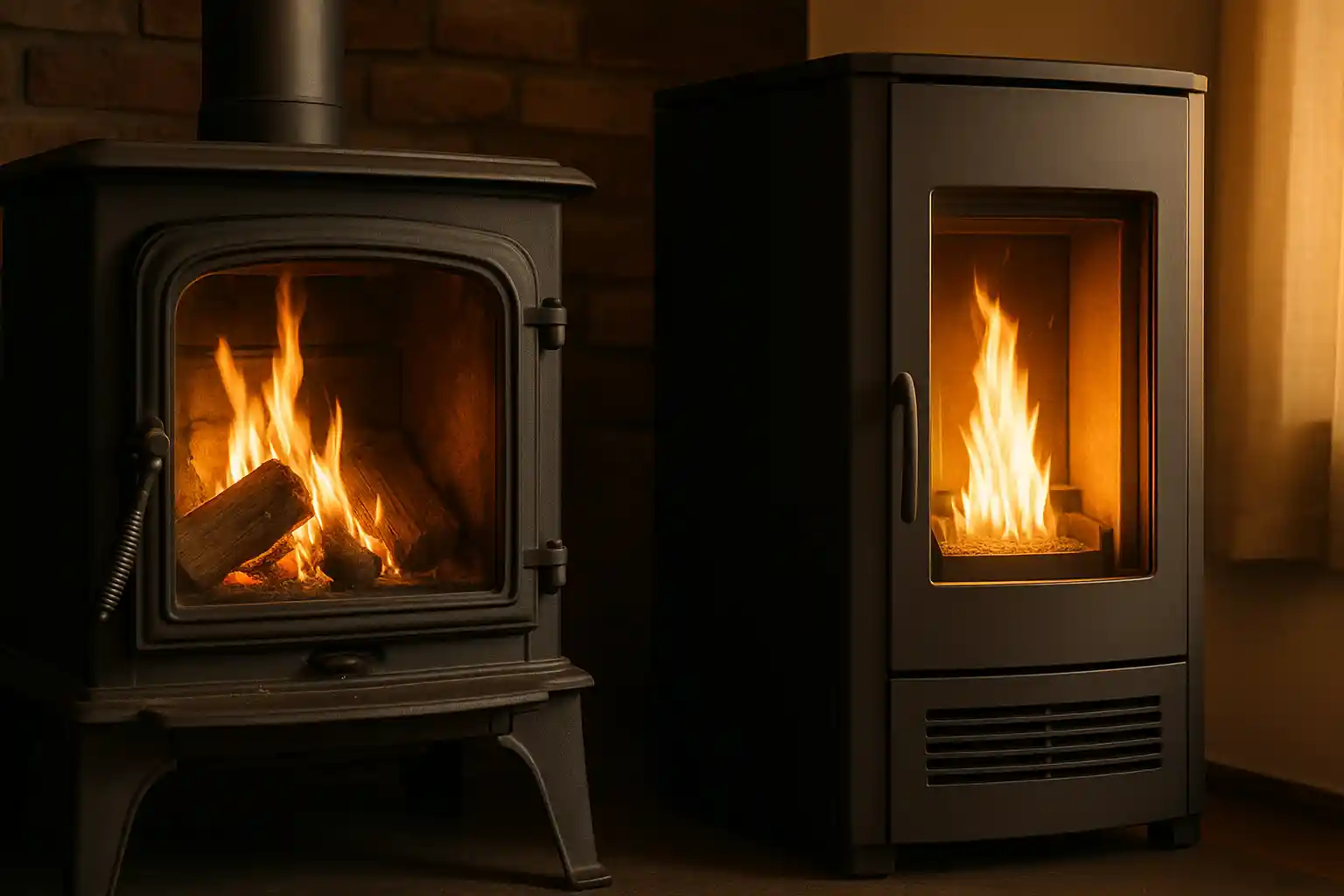

Choosing the best stove for your home in Pennsylvania often comes down to two main options: the wood stove and the pellet stove. Both can provide efficient, reliable heat for our cold winters but they work differently, cost differently, and fit different lifestyles.
In this guide, we’ll compare wood stoves vs pellet stoves so you can decide which is the right choice for your home.
Wood Stove: Burns split firewood. Offers a traditional look, a crackling fire, and can heat large spaces quickly. You’ll need to manually load logs and manage airflow.
Pellet Stove: Burns compressed wood pellets. Uses an automated feeding system to control the burn rate and maintain steady heat with less hands-on work.
📌 Related Reading:Best Heating Fuel for PA Homes: How to Choose Wisely
Purchase & Installation
Fuel Costs in PA
Long-Term Value
In Pennsylvania’s cold climate, pellet stoves can keep an even temperature with less tending, while wood stoves may produce more intense bursts of heat.
If you prefer a set-it-and-forget-it approach, a pellet stove may be the better fit.
Learn about EPA Wood Heater Standards
| Feature | Wood Stove | Pellet Stove |
| Heat Output | High, radiant bursts | Steady, even heat |
| Fuel Type | Firewood | Compressed wood pellets |
| Ease of Use | Manual loading | Automatic feed |
| Maintenance | Chimney & ash cleaning | Burn pot & hopper cleaning |
| Upfront Cost | Lower | Higher |
| Operating Cost | Can be low | Moderate |
Both wood stoves and pellet stoves can heat your home efficiently, but the right choice depends on your budget, lifestyle, and heating goals.
🔥 Ready to see these stoves in action? Visit our Shippensburg showroom or call 717-530-0159 our team will help you choose and install the perfect stove for your home.